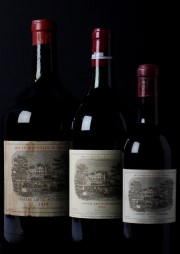by Wine Owners
Posted on 2013-12-17
When buying en primeur (and I’ve already half an eye on January’s upcoming 2012 Burgundy offering) the opportunity presents itself to pay a small premium for, effectively, having the wine bottled as you want it. A supplementary charge of usually around £10 per case will secure your selection bottled in halves or en magnum, while some producers may offer even bigger formats for long-term storage. What’s to be gained from larger format bottles from a collector’s perspective, and what are the drawbacks?
The most obvious function of larger format bottlings is their ability to resist the ravages of time more effectively. The reduction of the surface area of wine in contact with oxygen dramatically retards the speed of development, and allows a wine to keep longer than a 75cl bottle. In even larger formats, the presence of a traditional wax capsule may add further to the effect of slowing the wine’s evolution, though the point is very much up for debate.
Securing large format bottling of already scarce wines adds to the uniqueness of the purchased wine in years to come. Small producers may only set aside a tiny number of large format bottles each year in any case, so being one of the few customers who manage to have their allocations bottled in magnums or double magnums assures a longer drinking plateau and makes one feel special!
A magnum sized bottle is a useful dinner format, ensuring up to 12 guests are able to drink from the same bottle without risk of variation, a principle which can be extended by size of bottle and number of guests. Bigger bottles can also lend an element of theatre to the experience for some collectors who choose to serve direct from the bottle rather than decanting elsewhere.
The drawback of larger bottles for the collector comes around should the bottles want to be resold, where many collectors find that the bottling that carried a premium at release does not do so on resale, and may indeed prove harder to sell than standard bottles. Formats of double magnum or larger, interestingly, don’t seem to be affected the same way, being much rarer examples, and continue to command a price in excess, per volume, of standard bottles.


